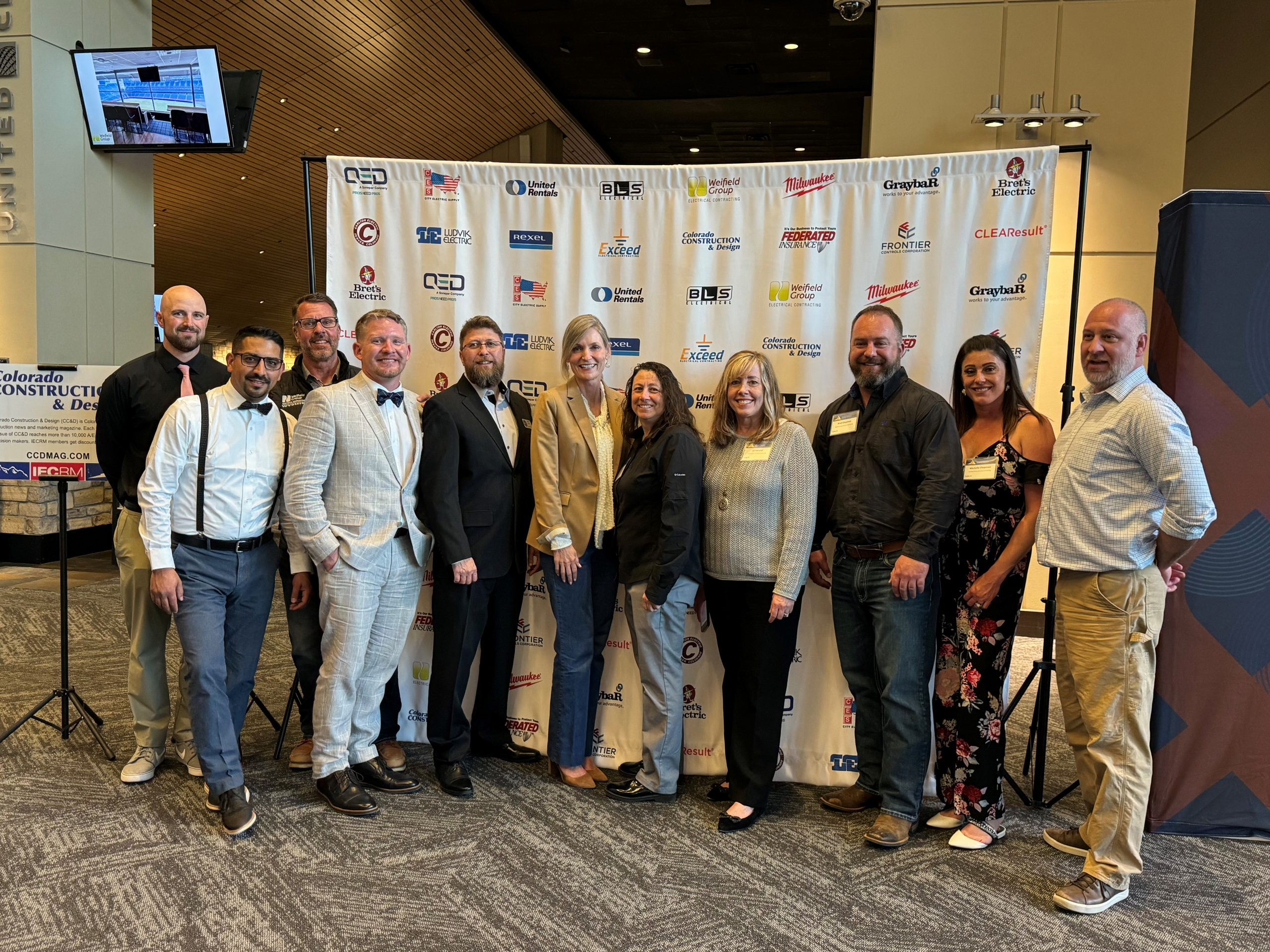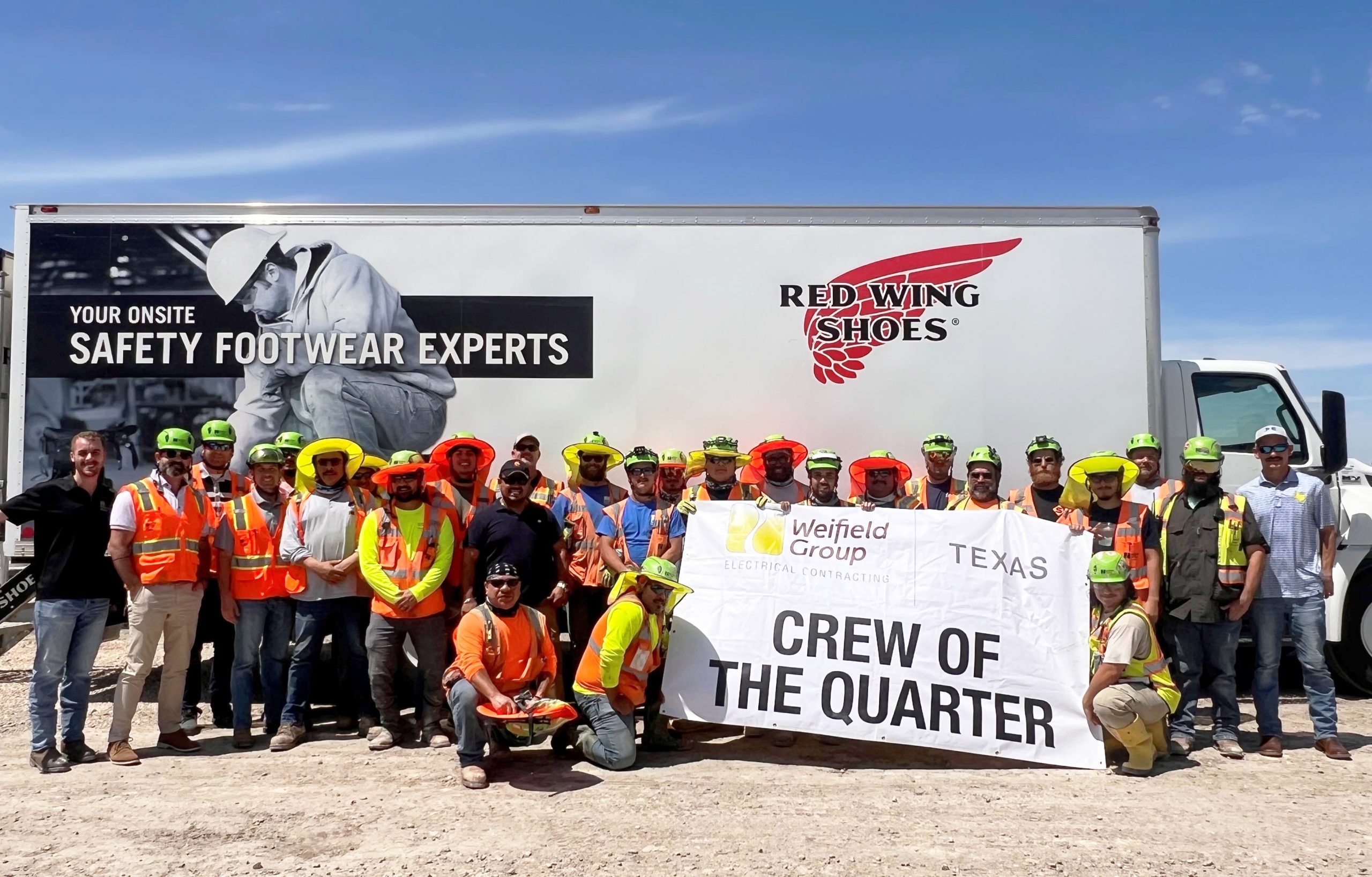Health and Safety on Work Sites
It’s just about summertime, and for those of us in the industrial sector, we have entered one of the most productive seasons of the year. It is also a time when we add an extra category of risk to our daily operations: Heat-Related Illness.
Prepare Your Team to Successfully Manage Seasonal Risks
Safety policies always present an opportunity for you to demonstrate your authentic leadership skills. When you keep your crew’s well-being in the front of mind, not only do you win the trust of your team, but you ensure maximum productivity.
With the change in seasons, project managers and site supervisors owe it to themselves and their team to take a minute to refresh their knowledge of heat-related risks and implement the most appropriate changes to their job sites.
How to Prevent Heat Illness
If you lead tradespersons and laborers, it is crucial that you protect your teams against heat stress in construction environments.
Here are five things you can do to prevent heat illness with very little effort and expense – especially in proportion to the seriousness of the dangers involved:
- Assess jobsites daily for high-heat conditions. See below.
- Establish effective controls and add them to your daily training sessions (Tool Box Talks and JHA’s).
- Consider alternating work schedules and extending break times to effectively maintain your cool. Make sure there are plenty of opportunities to rest and cool off during working hours. And if you want to be the coolest boss on the planet, provide fans and water misters in each break area.
- Ensure cool shaded areas are provided on-site. Bring a pop-up canopy if needed.
- And of course, make sure there is plenty of cool water for everyone. There is hardly a more cost-effective remedy for heat exhaustion than easily accessible bottled water. And don’t forget to balance daily hydration with electrolytes.
Heat and Humidity
The key to heat illness protection is to correctly evaluate weather conditions.
The temperature does not have to be very high for a heat-related illness to occur. And furthermore, it is paramount to understand the connection between Humidity and temperature to correctly assess working conditions.
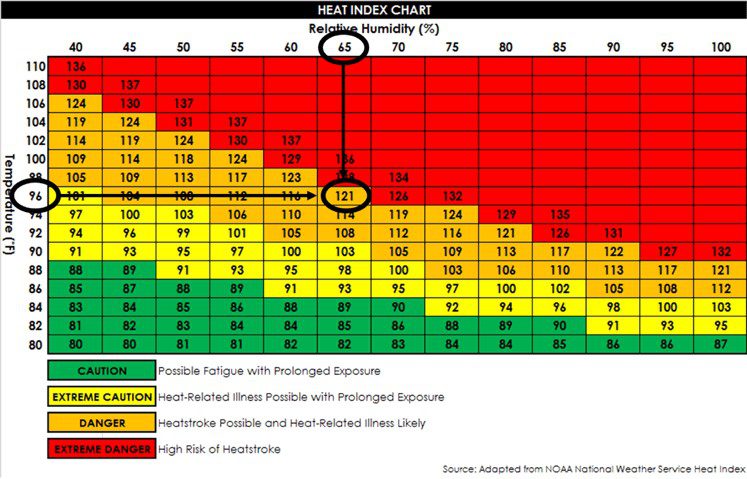
Signs of Heat Illness
How to identify signs of heatstroke and other heat-related ailments
It is vital that team members can identify common symptoms of heat stress and are prepared to offer basic first aid care if an episode is in progress.
Here are the most common symptoms, presented as four progressive heat-related illnesses.
1. Heat Rash
- Cause: skin irritation caused by excess sweating.
- Signs and Symptoms: rash-like irritation to the skin in certain areas, clusters of red pimples or small blisters on the neck, chest, elbow creases, groin, or at joints/skin folds.
- First Aid:
- Move to a cooler environment.
- Keep the rash area dry (wipe off or use powder).
- Avoid ointments & creams.
2. Heat Cramps
- Cause: signs of excess sweat, depletion of body salt and moisture.
- Signs and Symptoms: muscle cramps (typically in the abdomen, arms or legs, pain, spasms.
- First Aid:
- Drink water and have a snack or mix of electrolyte replacement liquid every 15-20 mins.
- Seek medical help if the worker has heart issues, a low sodium diet or if cramps do not subside within an hour.
3. Heat Exhaustion
- Cause: the body’s response to excess loss of water and salt.
- Signs and Symptoms: headache & Irritability, nausea, dizziness & weakness, thirst, heavy sweating, elevated body temperature or heart rate, and decreased urine output.
- First Aid:
- Remove worker from heat
- Offer plenty of cool liquids to drink, encourage frequent sipping.
- Remove unnecessary clothing and PPE.
- Cool worker with a cold compress or wash head, face, and neck with cool water.
- Seek medical attention for evaluation and supplemental treatment.
4. Heat Stroke
Heat Stroke is the most serious heat illness; fatal if treatment is delayed.
- Cause: the body becomes unable to regulate core temperature and is unable to cool down. Can cause death or permanent disability if medical treatment is not given.
- Signs and Symptoms: sweating stops, altered mental status, confusion, slurred speech, loss of consciousness (fainting or coma), hot dry skin, seizures, and high body temperature.
- First Aid:
- Call 911 – Seek immediate medical attention.
- Remove from heat to a shaded cool area and stay with them.
- Remove outer clothing and fan down to speed cooling.
- Rinse worker with cool water, wet skin, soak clothing in cool water.
- Place cold wet cloths, ice packs or compress to the neck, head, armpits, and groin areas.
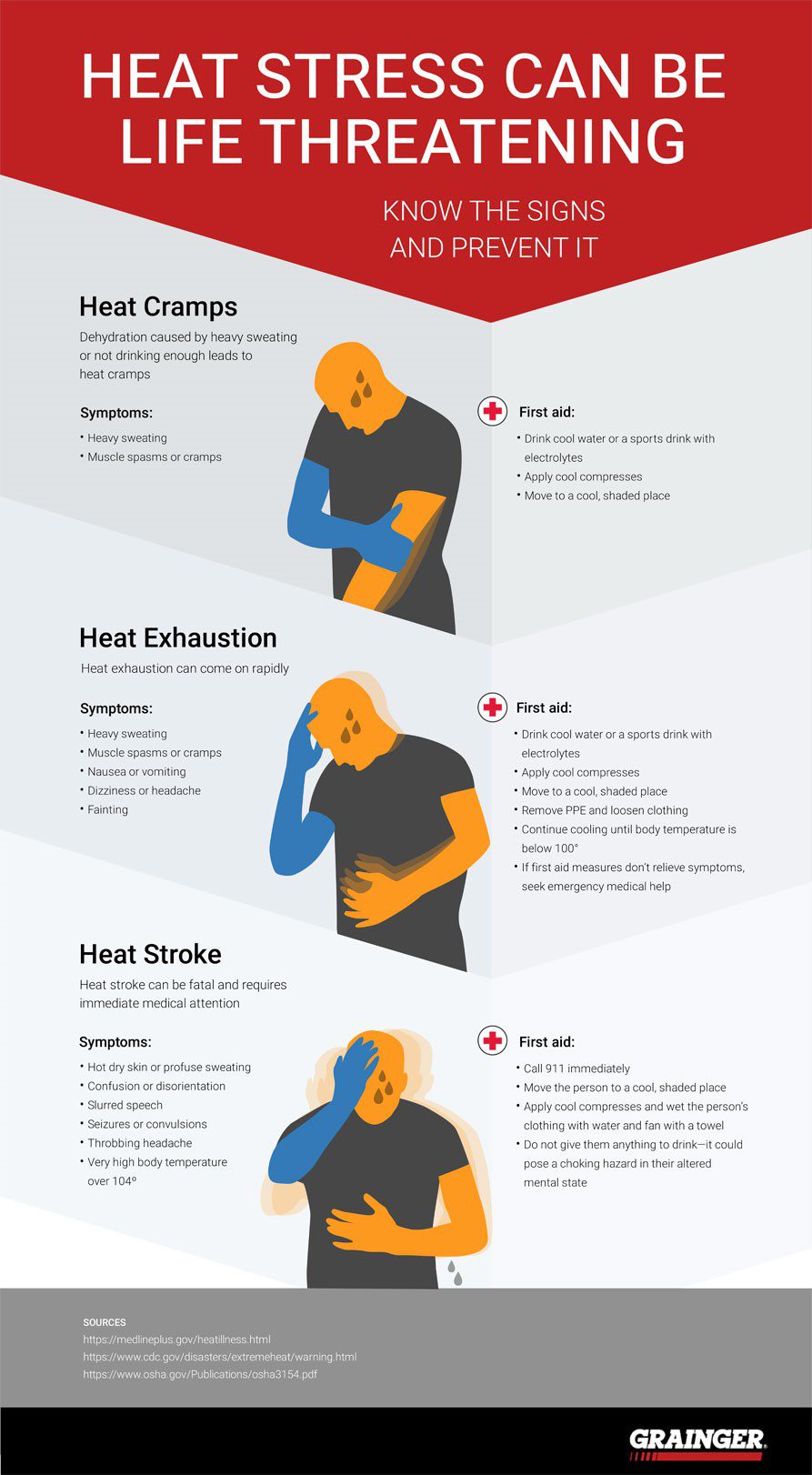
Urine Color Chart
The urine color chart will give you an idea on how hydrated you are.
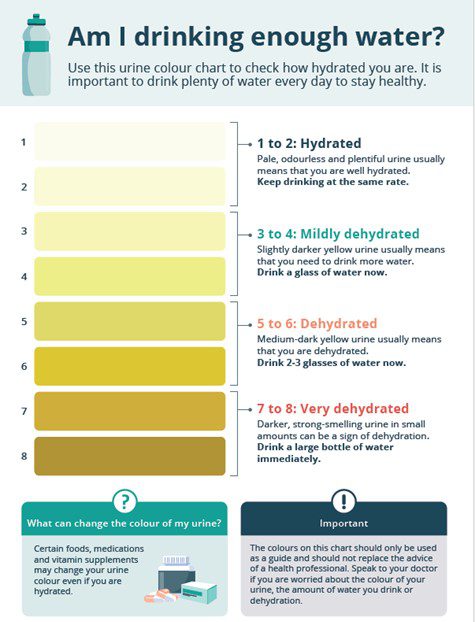
Am I drinking enough water?
Use this urine color chart to assess how hydrated you are. It is important to drink plenty of water every day to stay healthy.
1 to 2: Hydrated
Pale, odorless and plentiful urine is often an indication that you are well hydrated.
Keep drinking at the same rate.
3 to 4: Mildly dehydrated
Slightly darker yellow urine can indicate that you need to drink more water.
Drink a glass of water now.
5 to 6: Dehydrated
Medium-dark yellow urine is often an indication that you are dehydrated.
Drink 2-3 glasses of water now.
7 to 8: Very dehydrated
Darker, strong-smelling urine in small amounts can be a sign of dehydration.
Drink a large bottle of water immediately.
What can change the color of my urine?
Certain foods, medications and vitamin supplements may change your urine color even if you are hydrated.
Heat stroke is no joke – so be sure to stay cool this summer! Until next time, Work Safe & Be Safe!



